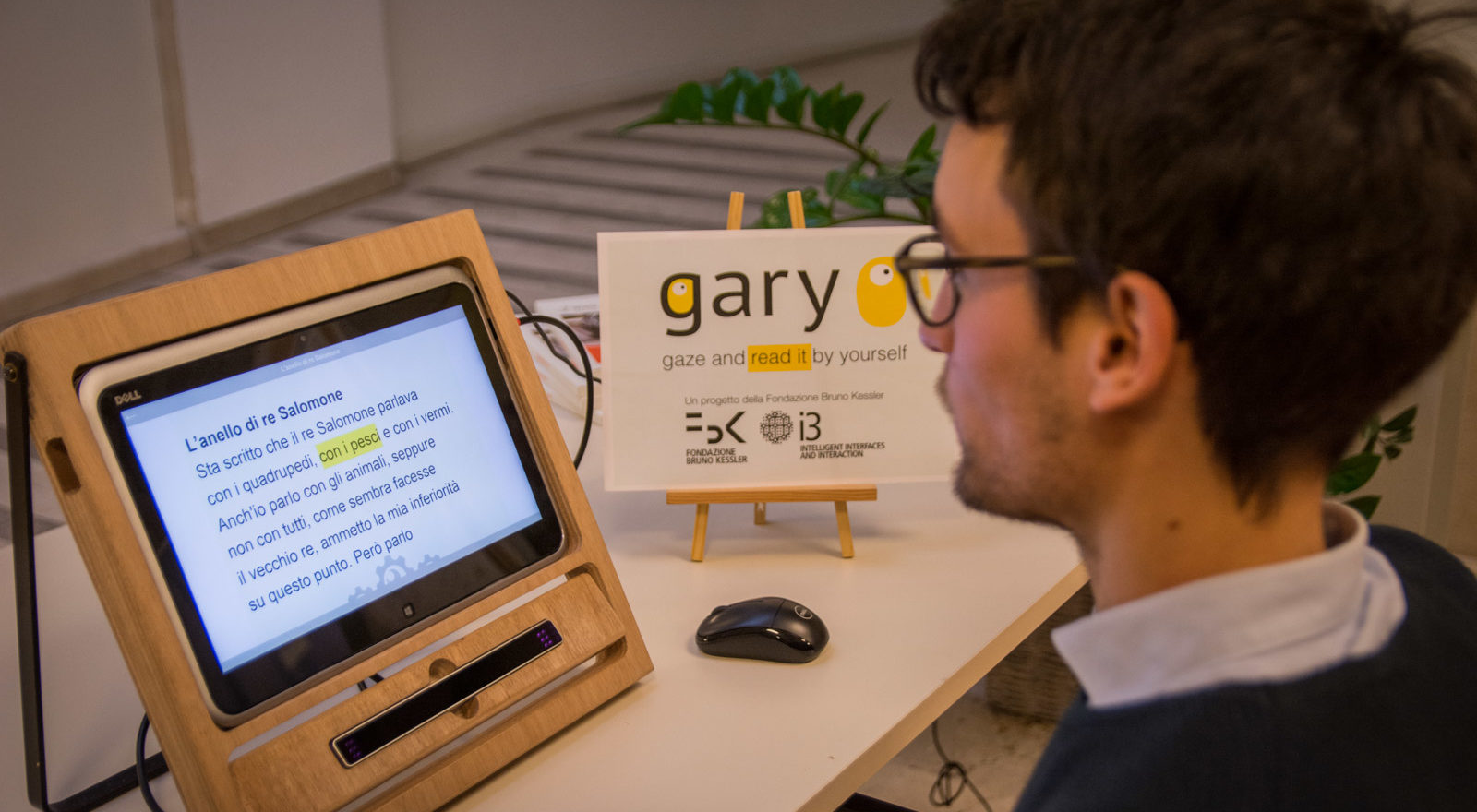Dyslexia: the power of reading aloud
Reading aloud, assisted by a technology that "captures" the reader's attention on the written word, allows children with dyslexia to increase their comprehension of a text. This is what emerges from a study, the result of the collaboration between the Bruno Kessler Foundation and the Department of Psychology and Cognitive Sciences of the University of Trento, which involved 40 boys and girls aged between 8 and 10 years, half diagnosed with dyslexia and the other half with typical reading skills. With “Gary,” an average 24% improvement in reading comprehension scores is possible
“We have shown that this technology facilitates the comprehension of the text in readers with reading difficulties”, explains Massimo Zancanaro, professor at the Department of Psychology and Cognitive Sciences of the University of Trento and head of the I3 research unit of the Bruno Kessler Foundation. The study involved twenty boys and girls aged between 8 and 10 with a diagnosis of dyslexia, and twenty others with typical reading skills, as a control group:”The improvement – continues Zancanaro – is evident compared to the to audio-only reading support technologies. These technologies do not act on the child’s attention, but only tend to relieve him of the difficulty of reading a text». The tool perfected by the researchers – which acts through the automatic adjustment of the audio speed and the guidance of attention on the written text – does not in fact remove the fatigue of reading typical of the dyslexic child, but facilitates it, thus favoring the attentional control and a consequently greater understanding.
“Gary” – this is the name of the instrument used in the research – is a prototype developed by the Bruno Kessler Foundation. It provides the reading aloud of the text and at the same time, through an eye tracker device, identifies the reader’s gaze on the digital text shown on the video by monitoring whether he/she is looking at the word that follows, which at that point is highlighted. “As hypothesized – concludes the research – the use of Gary increases reading comprehension in boys and girls with dyslexia compared to a traditional speech synthesis tool, showing an average 24% improvement in reading comprehension scores”.
The study, published in the journal “Journal of Computer Assisted Learning”, combined with the refinement and enhancement of the “Gary” prototype created by FBK, could be the basis for further studies both in the field of dyslexia but also in the field of foreign language learning, especially those in which the written word often does not coincide with its pronunciation.
The article, entitled “Attention-driven read-aloud technology increases reading comprehension in children with reading disabilities”, published on 9 February 2021 in the “Journal of Computer Assisted Learning”, was written by Gianluca Schiavo, Nadia Mana, Ornella Mich , Massimo Zancanaro and Remo Job.

